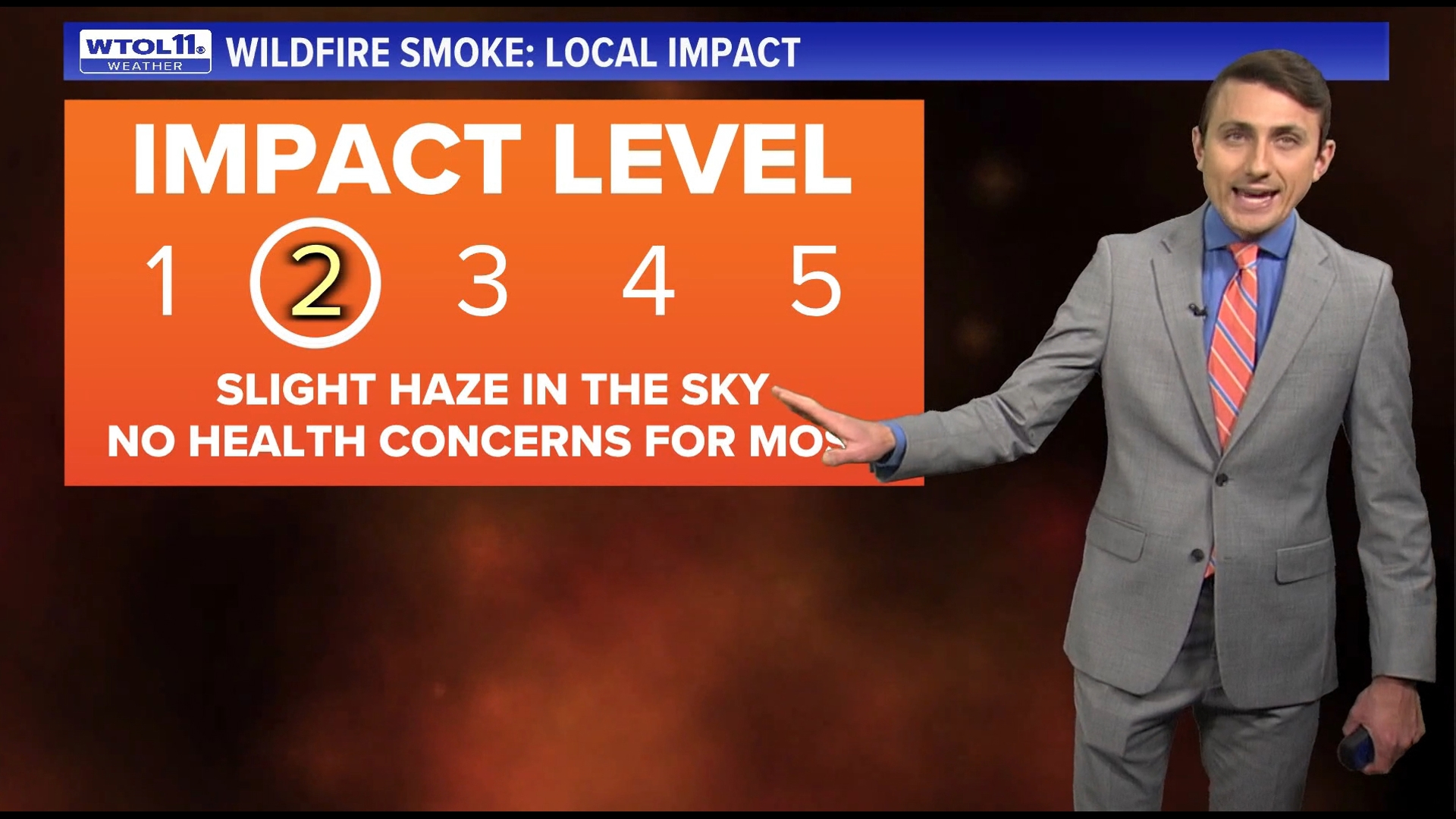TOLEDO, Ohio — In this week's Climate Friday Newsletter, Meteorologist John Burchfield will preview what you can expect to see out of this year's wildfire season.
After the historic 2023 wildfire season, you may be wondering if we will feel local impacts again this summer. The 2024 wildfire season is already off to a swift start with more than one million acres burned and numerous active fires.
Rampant fires blazed over 45 million acres of land in Canada in 2023, the greatest ever in recent history. So far this year, 1.1 million acres have burned, marking an early start to the summer fire season.

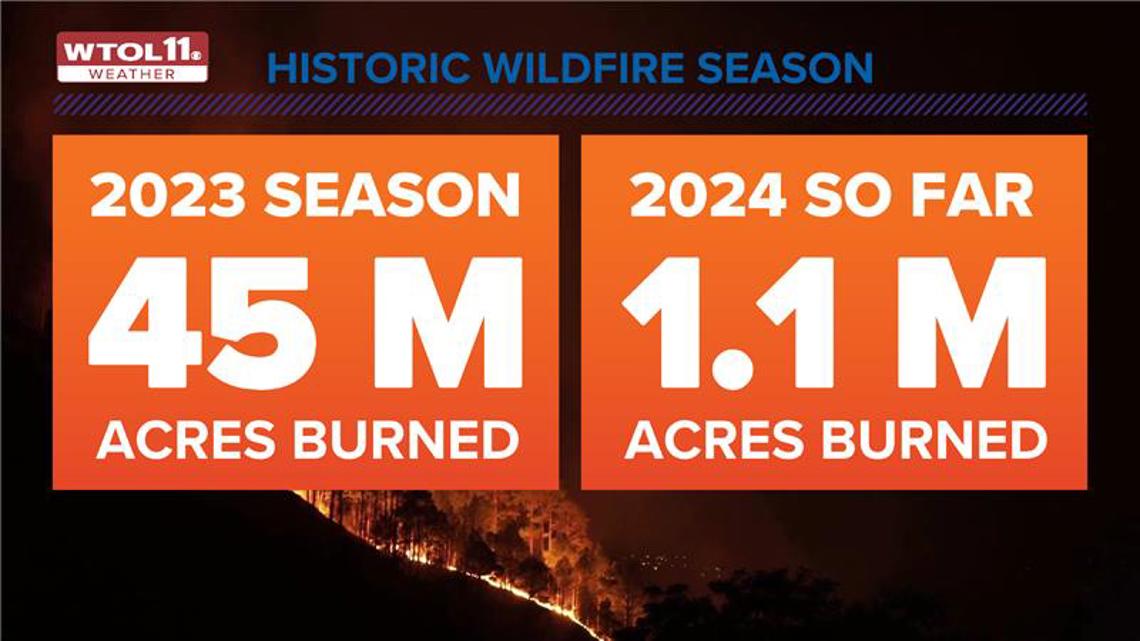

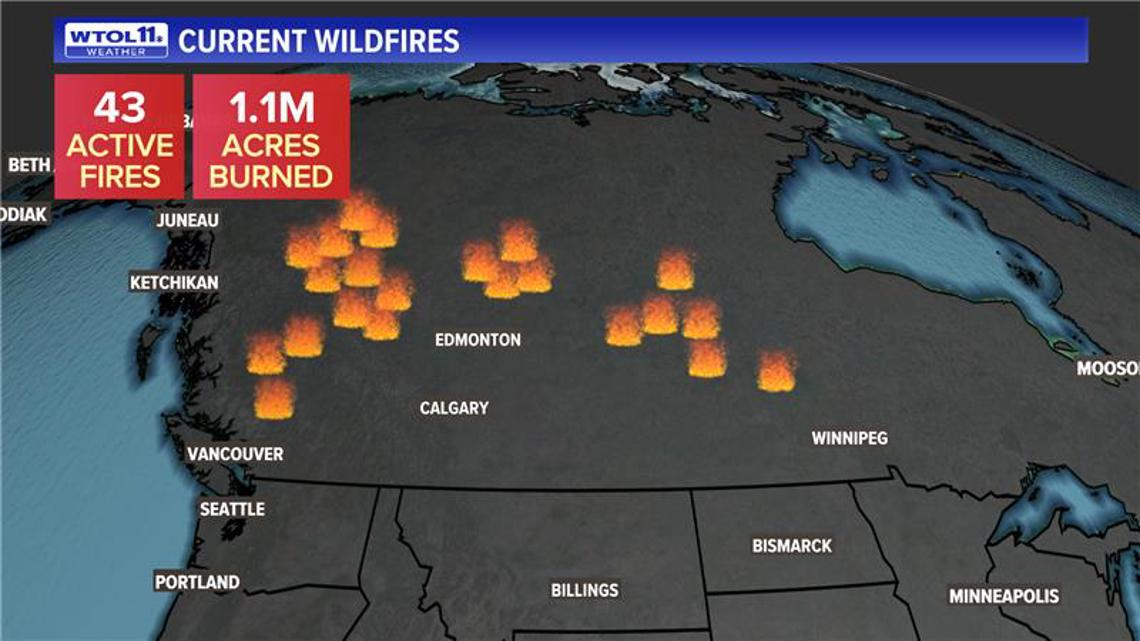
Last year's intense fires forced the evacuation of over 235,000 Canadians, causing significant impacts to life and property. With many of these fires in remote areas, fire crews struggled to access and extinguish the blazes at their sources.


Putting out wildfires last summer was like a game of "whack-a-mole", and as surely as one fire was extinguished, another began. This year, over 43 active fires have impacted northwest Canada, burning over one million acres of land and deteriorating air quality. Much like last summer, fires have ravaged British Columbia and Alberta, the northwest provinces that have experienced the brunt of the impacts of these fires in recent years.
One of the largest ongoing fires, the Parker Lake Fire, has single-handedly burned over 20,000 acres in British Columbia. Wildfire season is just beginning and will continue to ramp up as summer approaches.

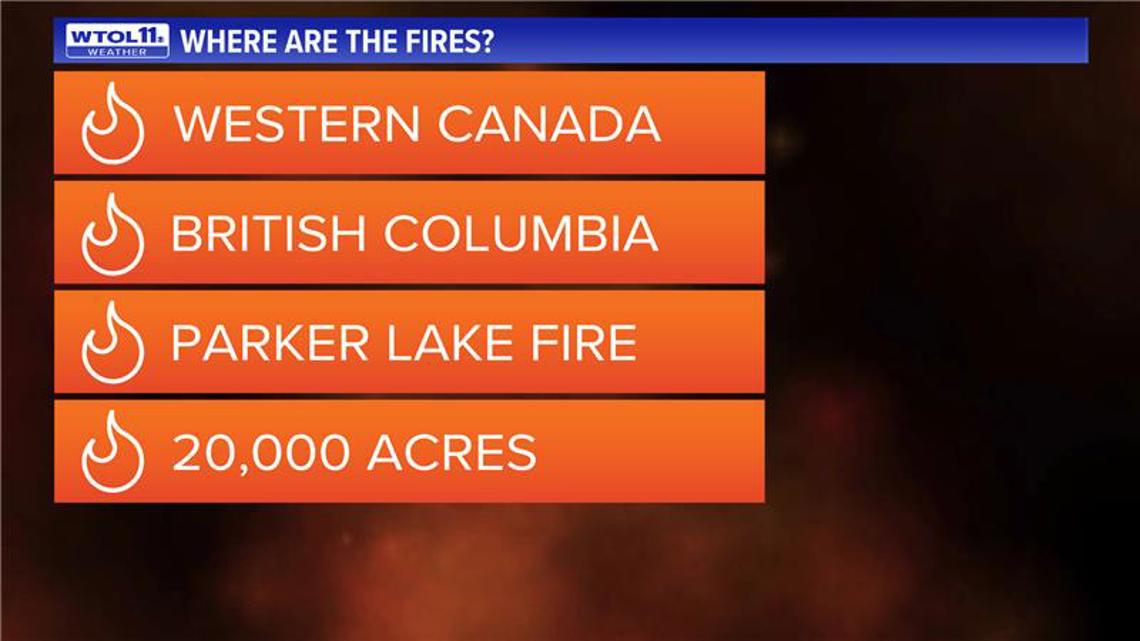
With nearly half of Canada experiencing drought conditions in mid-May, wildfires will proliferate rapidly throughout the parched foliage and grass. Drought has been the most extreme in the northwestern provinces, with "extreme" and "exceptional" drought conditions reported in Alberta, British Columbia, and the Northwest Territories.

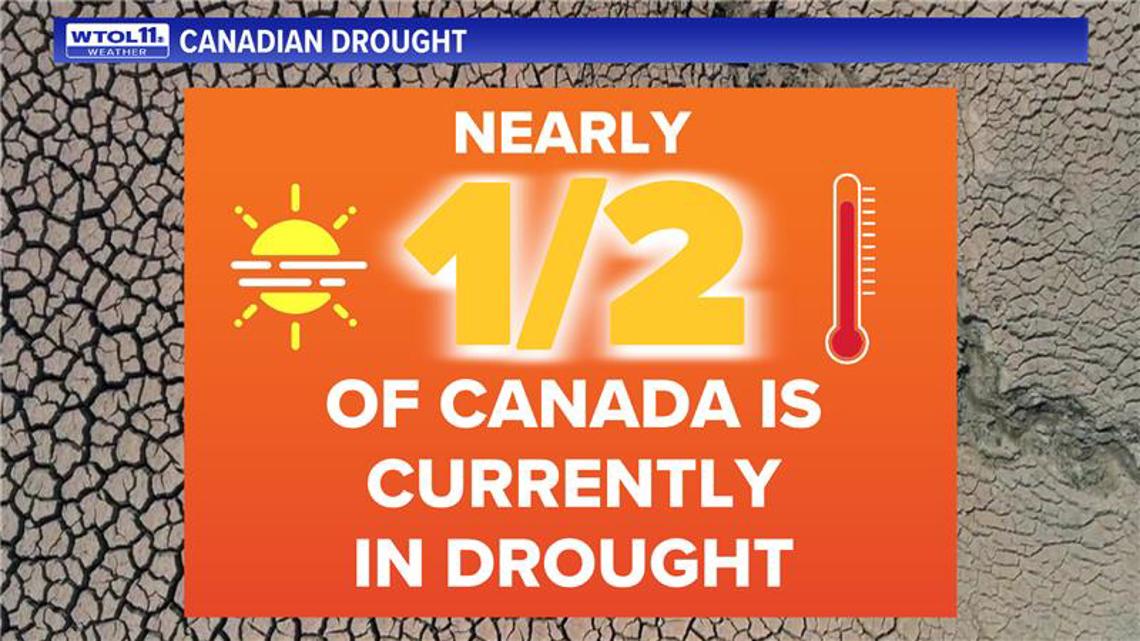
With much of the nation in a severe rainfall deficit, wildfires will continue to develop and spread in the coming months. When dry conditions meet hot and windy weather, wildfires proliferate rapidly. This recipe facilitated the historic 2023 wildfire season and will likely exacerbate the Canadian fires as summer begins in 2024.


Locally, the fires are not causing any significant impacts yet, but may contribute to air quality concerns later in the summer. If you're reading this on Friday, the air quality index (AQI) is expected to climb to 65, which is considered "moderate".
While this category indicates higher than normal particulate matter in the atmosphere, it is not associated with any health concerns other than minor sensitivity in elderly individuals and those with asthma and other respiratory conditions.

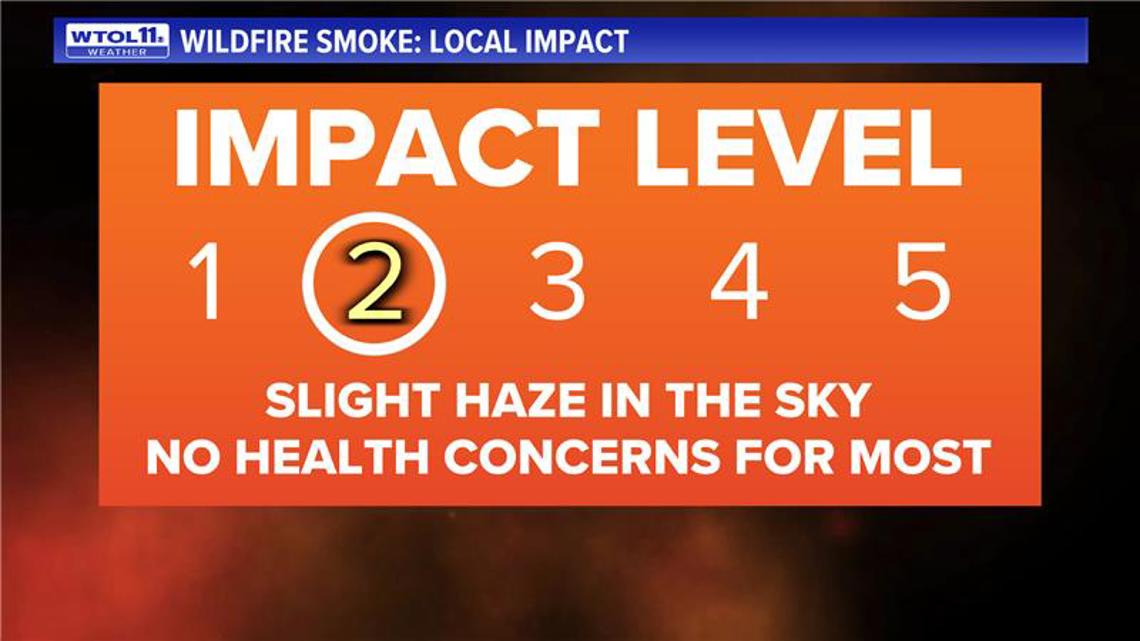
Once the AQI reaches 100, health concerns may result, and at an AQI over 150, health officials recommend limiting outdoor activity for all individuals. Even low levels of wildfire smoke high in the atmosphere can contribute to a hazy, reddish orange appearance at sunrise and sunset and obscure the beautiful, blue skies summer is known for.


You may have noticed a murky haze in the sky over the last week, especially at sunrise and sunset. This represents Canadian wildfire smoke lofted hundreds of miles along the jet stream into Ohio and Michigan. Though air quality levels are expected to remain passable, low amounts of wildfire smoke may remain in the atmosphere through early next week.
As the Canadian wildfire season ramps up, local impacts are almost inevitable this summer. Stay tuned to the WTOL 11 weather team for updates and subscribe to the Climate Friday Newsletter for new information every week.

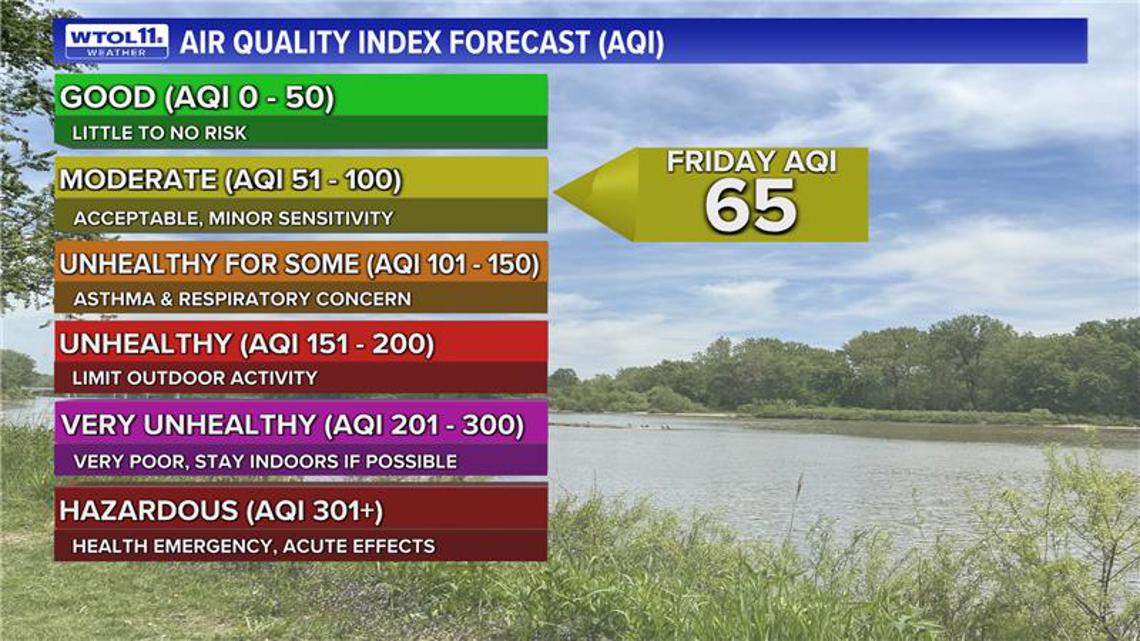
READ MORE FROM 2023 COVERAGE: Climate Friday | Everything you need to know about Canadian wildfire smoke
LOOK BACK AT 2023 PHOTOS: Wildfire smoke causes unbelievable before and after photos of NYC
WATCH MORE CLIMATE FRIDAY EPISODES:

